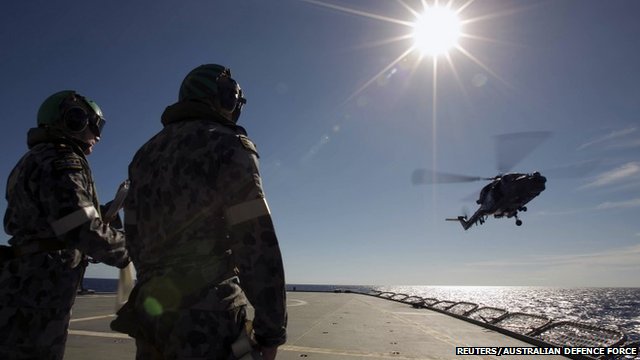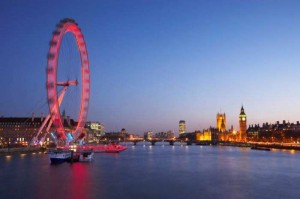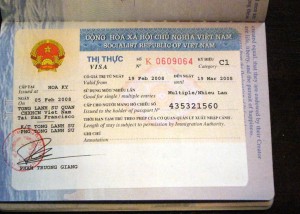Malaysia missing plane MH370 search has ‘best lead so far’

An Australian vessel searching for the missing Malaysia Airlines plane has detected signals consistent with those from “black box” flight recorders.
The Ocean Shield ship picked up the signal twice, once for more than two hours, said Angus Houston, a retired air chief marshal leading the search.
He called it the “most promising lead” so far.
But he said more information was needed: “We haven’t found the aircraft yet and we need further confirmation.”
Malaysia’s acting transport minister, Hishammuddin Hussein, said he had been briefed by Air Chief Marshal Houston and was “cautiously hopeful that there will be a positive development in the next few days if not hours”.
The plane, carrying 239 people, was flying from Kuala Lumpur to Beijing on 8 March when it disappeared. Malaysian officials say they believe it crashed in the southern Indian Ocean.
‘Two distinct returns’
ACM Houston said the signals were detected using the towed pinger locator deployed on the Ocean Shield.
 The signals were heard by the towed pinger locator deployed by the Ocean Shield
The signals were heard by the towed pinger locator deployed by the Ocean Shield
Two separate detections occurred, he said. The first was held for two hours and 20 minutes before being lost.
Analysis
 Richard Westcott BBC Transport Correspondent
Richard Westcott BBC Transport Correspondent“Lottery odds” is how one oceanographer described to me how incredible it would be if they had actually stumbled over distress signals from the black boxes.
This listening equipment trickles along at just a few miles an hour and they were searching an area the size of Britain.
Now they are racing against the clock to try to pick up the signals again so they can pinpoint a better location, and send a drone down to look for parts of the aircraft. The battery on this pinger will be starting to go flat, which cuts the range.
One very interesting part of these findings is the fact that they seemed to hear two separate pings on one of their sweeps. There are two pingers on board the plane, one for each black box.
Could the noise be something else? Well, the frequency of black box pings, 37.5 kHz, is designed to be unique in the water. It’s an unusual frequency, so that it’s easier to find. But the ocean’s an incredibly noisy place and people and equipment can make mistakes.
The ship then turned around and on the return leg detected the signal again for 13 minutes.
“On this occasion two distinct pinger returns were audible. Significantly this would be consistent with transmissions from both the flight data recorder and the cockpit voice recorder,” ACM Houston said.
“I’m much more optimistic than I was a week ago,” he said.
“We are now in a very well defined search area, which hopefully will eventually yield the information that we need to say that [Malaysia Airlines flight] MH370 might have entered the water just here.”
The Ocean Shield was still in the area, about 1,040 miles (1,680 km) north-west of the Australian city of Perth, but had not been able to reacquire the signals since, he said.
The position of the signals needed to be fixed, ACM Houston said. Once that happened, the Ocean Shield could lower the Bluefin 21 underwater autonomous vehicle to try to locate wreckage on the sea floor.

The signal had been heard in sea with a depth of 4,500m, he added, which was at the limit of the capability of the Bluefin 21.
He cautioned that the next steps would take time.
“It could take some days before the information is available to establish whether these detections can be confirmed as being from MH370,” he said. “In very deep oceanic water, nothing happens fast.”
The search operation is in a race against time as the flight recorders’ batteries are due to run out, meaning a signal would no longer be emitted.
A Chinese search vessel, Haixun 01, also said it briefly heard signals over the weekend in a different search area.








